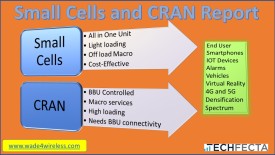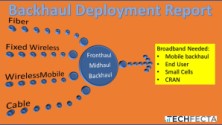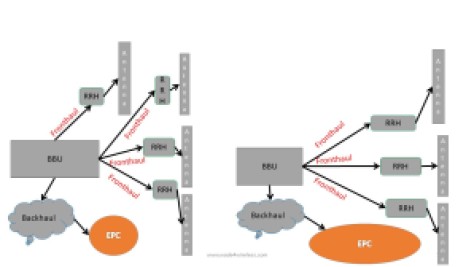I get asked a lot about 5G. I’ve emailed with questions, so I thought I would answer them and expand on the coverage everywhere.
- Question – When will 5G rollout? Answer – it’s going to start in 2019, but 2020 is when it will reach the broad market, at least in the USA.
- Question – Who will roll out 5G first. Answer – It could be anyone. In the USA all the carriers are working towards 5G, but Verizon and AT&T are working to get fixed wireless 5G while it appears that T-Mobile and Sprint are working to get mobile 5G out there first. If they merge, then they could get it out there even faster.
- Question – will 5G pay back its initial investment? Answer – I hope so!
- Question – will 5G make more money than 4G? Answer – I hope so!
- Question –Will 5G reach everyone? Answer – it won’t.
The reality is there will be 5G almost everywhere, probably in 2022, but we don’t have wireless coverage everywhere now, do we? Sure, Wi-Fi has amazing indoor penetration, but no thanks to the carriers. We had to add it ourselves. AT&T started to roll out Wi-Fi, remember, then  they seemed to slow down, nearly stop. It was hard for them to get paid for it, but they wanted to offer it to their customers. I give the cable companies credit, they rolled out Wi-Fi better than anyone, but I am not sure how they are making money off of it. They seem to limit access on occasion.
they seemed to slow down, nearly stop. It was hard for them to get paid for it, but they wanted to offer it to their customers. I give the cable companies credit, they rolled out Wi-Fi better than anyone, but I am not sure how they are making money off of it. They seem to limit access on occasion.
Back to 5G, will it be everywhere? Probably not, but if the carriers replace 4G with 5G and continue to upgrade 2G and 3G to the latest and greatest, it will match and expand on what we have today. They have to continue to push out the licensed spectrum.
The beauty is that we ill have more options for 5G, like CBRS, LTE-U, and even Wi-Fi could all play a part to get 5G everywhere. We will use all  the spectrum in the toolbox to get close. That is why it is so important to keep all the options open.
the spectrum in the toolbox to get close. That is why it is so important to keep all the options open.
Wi-Fi is coming out with 802.11ax, learn more at https://en.wikipedia.org/wiki/IEEE_802.11ax, which would help make Wi-Fi even better, according to the reports.
- https://www.networkworld.com/article/3215907/mobile-wireless/why-80211ax-is-the-next-big-thing-in-wi-fi.html
- https://www.networkworld.com/article/3258807/lan-wan/what-is-802-11ax-wi-fi-and-what-will-it-mean-for-802-11ac.html
The great news for Wi-Fi vendors is that they will sell more product. That’s good news for the vendors!
The handsets are already being upgraded; they will add new spectrum, LTE-U, CBRS, and more to their smartphones.
The carriers are going to look for cost-effective ways to roll out more sites, small cell, CRAN, DAS, and macro. It’s the only way to reach more people with the higher broadband requirements. They will need more fiber for backhaul and fronthaul. They will need to deploy wireless backhaul and fronthaul. It all costs money.
Therein lies the rub! Now that most plans are unlimited, where is that extra revenue going to come from? They need new revenue sources. They will try to get more money for 5G in the beginning, but how long will that be until T-Mobile offers unlimited 5G for a flat fee that forces everyone to play in the same sandbox?
For 5G to be everywhere, we need more than IOT to take it everywhere. We need new businesses that will build around 5G. That’s the key to success. What is the new business model, to be honest, I am not sure. Here are some ideas.
- Augmented reality in sports? I hope so, that would be so cool. I think to see any sport in full 3D or as if you are there, would be the greatest!
- Virtual reality in gaming? Again, the coolness factor is through the roof! I think this would be the greatest, and I am not a gamer. Just the thought of it would rule.
- Movies for augmented reality? Is this really a 5G play? It doesn’t seem like it.
- IOT is a way for the carriers to increase revenue and subscribers. The thing is, IOT devices will be cheap, low monthly airtime is expected. The great thing is that it should be automated to the point the carriers just activate them by the hundreds and they don’t do anything else. Still, low revenue doesn’t help much so there have to be very high numbers to see the gain.
- Medical! Augmented reality with massive broadband and ultra-low latency could make remote surgeries a reality. Here is a key medical practice that could open up a new business and world. There is a lot of risks here, but it could get advanced surgeries to poor countries. Again, we need investment from philanthropy groups to pay the bill. However, look how much money the Red Cross and United Way throw around. This could be a way to get the ball rolling to save lives not only in other countries but remotely here in the US. If there is an accident somewhere and there isn’t time to get there, the ambulance could set something up to allow the doctor to do tests and perhaps a medical procedure remotely to save on valuable time! What if something happens in a remote place, mountaintop, snow-covered ridge, or even at a tower site? All remote and all could get something done immediately, before going back to the hospital. A lifesaver that a hospital could invest in. Could you imagine someone in their apartment getting the help they need before leaving for the hospital from a surgeon? Awesome!
- The live video could be used for public safety or entertainment. Look how Instagram and Twitter spread news faster than ever. This could make anyone a live reporter. It could also make any public safety official on a live uninterrupted video stream. Would that make things better or worse? We’ll see.
- Smart grid control – this is an IOT thing, and to be honest, it can probably be done with 4G or SigFox.
- Self-driving vehicles are another thing that we expect to see. However, they are already here, and most of the brains are in the vehicle. It’s not that they don’t trust the carrier to provide the signal, it’s the latency through the system. When I say vehicles, think cars, trucks, and drones. Think of package delivery. I believe that this is possible, but people don’t trust the vehicles on the road without a human. That is unless the government is using a drone to spy without a live pilot in the vehicle. They still have live pilots back in a control center. The pilots are watching in real-time. The way I see it, LTE can do this, but 5G will make it better.
- Extreme broadband will replace cable access to the homes. This is something that the carriers are betting on. They intend to provide fixed wireless to as many businesses and homes as they possibly can. It makes sense, and it will be a new source of revenue for the carriers. Here is a money-maker for them. They will attack the cable companies head to head.

The point is, we need to see what new business cases will drive 5G. The carriers are already looking for new business ideas outside of the connection. That’s why Verizon and AT&T are looking at the entertainment business as well as companies with new apps. They need to expand as soon as possible.
I purposely didn’t bring up the smart city initiatives. I’ve been looking at this, and most cities don’t want to spend any money outside of public safety. They are looking for partners to do it for them. Spoiler alert, what I have seen for smart cities is live video and IOT applications, and they want someone else to pay. Maybe a utility or a local business. Then they want to charge the said company for permits, access to assets, and traffic control. I’m just saying, this is what I have seen over and over again. There are several exceptions, and they shine!
What can you do to make this happen? Come up with some ideas of your own and make it happen!
- https://www.huawei.com/minisite/5g/img/5G_Opening_up_New_Business_Opportunities_en.pdf
- https://pdfs.semanticscholar.org/presentation/746e/5aab9bfd6ef4dca36ff5679cadb16e5e9c85.pdf
- https://5g-ppp.eu/wp-content/uploads/2017/03/5GPPP-brochure-final-web-MWC.pdf
- https://www.cta.tech/News/i3/Articles/2017/July-August/The-Promise-of-5G.aspx
- https://www.sdxcentral.com/articles/news/5g-network-slicing-make-new-business-models-possible/2017/01/
Be smart, be safe, and pay attention!
See Ya!
More products from TechFecta and Wade4Wireless:
The foundations below do beautiful work, helping families in their time of need. Climbers often get seriously injured or die on the job. The foundations below support those families in their time of greatest need!
Hubble Foundation helps the families of climbers in a time of need and beyond with financial support and counseling!
Tower Family Foundation supports the families of tower climbers at the time of crisis when a climber falls with financial assistance and more.






 Putting together your smart city tech solutions, planning, development, and more…TechFecta! Guiding you to a better plan through consulting!
Putting together your smart city tech solutions, planning, development, and more…TechFecta! Guiding you to a better plan through consulting!




















